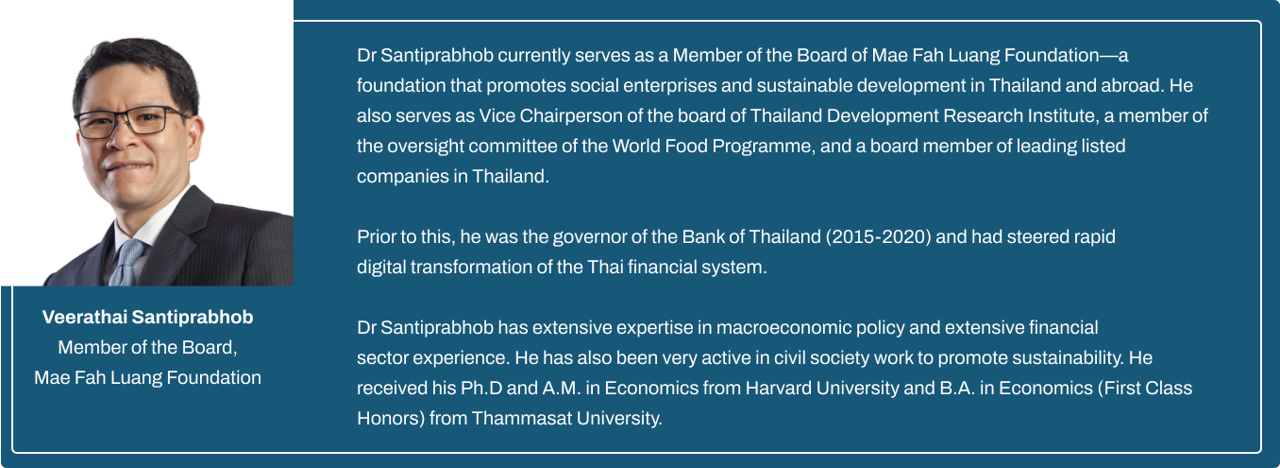Tariq Fancy, BlackRock’s former sustainable investing chief, caused a splash last month when he claimed that sustainable investing is “a dangerous placebo that harms the public interest”, “like selling wheatgrass to a cancer patient”. This ruffled the feathers of many ESG advocates, who immediately got on the defensive and started arguing why Fancy must be wrong.
I’m also an advocate of sustainable investing, having worked in this area for 15 years and recently released a book on it — so I too wanted to tear apart Fancy’s essay. But the problem with giving a TED talk on listening to different viewpoints is that it obligates me to practice what I preach. One of the lines in that talk is: “Read and listen to people you flagrantly disagree with. 90% of what they say may be wrong, in your view. But what if 10% is right? As Aristotle said, “The mark of an educated man is the ability to entertain a thought without necessarily accepting it.” ” So I gritted my teeth and read Fancy’s article as open-mindedly as possible — and ended up concluding that he’s far more than 10% right.
For any academic study, we should base our view on the rigor of its methodology rather than whether we like its conclusions. For an essay, we should similarly start with the logic of its framework before fast-forwarding to its implications. The analogy that Fancy uses throughout his essay compares capitalism to a basketball game. Two teams compete against each other and have strong incentives to win — just as executives have strong incentives to increase profits due to their pay schemes. Good sportsmanship reduces teams’ ability to win (if it didn’t, it would be gamesmanship, not sportsmanship), so — given their incentives — they won’t practice it by themselves; they need a clear set of rules and referees to enforce those rules. Believing that sustainable investing can transform the world is like having a professional basketball league without rules or referees, but clubs writing glossy purpose statements promising to play fair.
There’s much to learn from this analogy. First, it highlights the criticality of government intervention. Just as referees punish fouls, so governments should tax carbon emissions rather than relying on investor promises to combat climate change. Indeed, while any card-carrying ESG advocate will fall over themselves to bash Milton Friedman’s claim that “The social responsibility of business is to increase its profits,” Fancy has actually read Friedman’s article beyond the title. Friedman argues that businesses should focus on profits not because he thinks that social issues are unimportant, but because governments are far better placed to deal with them through taxation and regulation. We have no problem with basketball teams trying their hardest to win games while playing by the rules, so — according to Friedman’s view — we should support companies maximising profits while obeying the law.
Moreover, governments are democratically elected by citizens, with each having one vote. The problem with leaving social policy to the CEOs of companies and CIOs of asset managers is that they’re the 1%. They may ignore issues that matter to ordinary citizens who don’t hold shares and aren’t represented in capitalism — such as the loss of millions of blue-collar jobs if we fail to achieve a “just transition” to a low-carbon economy.
Second, the basketball analogy stresses that sportsmanship often conflicts with success. Similarly, in business, there are trade-offs — creating value for society sometimes erodes profits. But ESG advocates often deny any trade-off, and people lap it up due to confirmation bias. As Fancy writes: “there’s always money to be made from telling people what they want to hear”. A Wall Street Journal op-ed by David Blood and Al Gore claimed that “Voluminous research has shown conclusively that businesses properly integrating ESG factors into their plans are typically more successful and profitable”. They didn’t cite any research, and didn’t need to because ESG supporters will lap up the claim uncritically. But the most rigorous research, published in the elite academic journals, shows that the evidence is decidedly mixed.
Third, the analogy highlights the limitations of divestment. If basketball fans each owned shares in athletes, and someone sold her stake in an unsportsmanlike player to another fan, nothing changes — the player would still be on the court, and continue to play dirty. Similarly, an investor can only sell shares if someone else buys, so divestment doesn’t deprive a polluting company of capital.
So there’s much to like about the basketball analogy. But it breaks down in two important ways. First, basketball is a zero-sum game. One team can’t win without the other team losing. But business isn’t zero-sum. Fancy argues the analogy of two basketball teams is two rival companies. Yet the concept of “coopetition” has existed for over a century, where industry competitors can not only compete with each other to grab a greater slice of the pie, but also cooperate to grow the pie, for example by improving industry standards and sharing best practice. And the relevant analogy isn’t to a company and its rivals, but to a company and its stakeholders. Unlike in basketball, where sportsmanship to your opponent can cost you points, “sportsmanship” to your stakeholders can grow the pie for the benefit of both. This isn’t just wishful thinking; it’s based on rigorous evidence. One of my studies showed that, over a 28-year period, companies that treat their employees well outperformed their peers in total shareholder returns by 2.3–3.8% per year — that’s 89–184% compounded.
Fancy argues that, if indeed there is a link between purpose and profit, there’s no need for ESG — profit-motivated CEOs will invest in purpose. But that’s assuming the “rational economic (wo)man” idea confined to economics textbooks. With perfect information, profit can indeed be maximised instrumentally. You estimate the net present value of an investment — if it’s positive, you take it; if it’s negative, you reject it. But while you can estimate the NPV of investing in a factory, it’s much harder to do so for investments in stakeholders. If you grant employees more parental leave, how much more motivated and productive will they be, and how much more profit will this give you? There’s no way that you can put even a rough number on this, and so a purely profit-maximising company won’t make such an investment. But a purpose-driven company might, and the evidence shows that such investments end up profitable ex post even if you can’t predict the payoffs ex ante. Strikingly, my paper was published 10 years ago, and so “rational economic (wo)man” investors should be jumping on the employee satisfaction alpha, eroding it away. Yet my study was recently replicated for the 10 years that have happened since — and the returns are just as strong. Profit-seeking investors are clearly not capitalizing on the employee satisfaction alpha, but an ESG investor might.
Fancy’s fixed-pie framework means that he ignores the key mechanisms through which sustainable investing changes company behavior — engaging with companies to grow the pie. Indeed, careful research shows that engagement by index funds, hedge funds, and investor collective action groups creates shared value for both shareholders and society. In particular, activism on ESG issues creates shareholder value as a by-product, and that engagement on shareholder value ends up improving ESG.
The second limitation of the analogy is that regulation is easy in basketball — referees can spot fouls, perhaps aided by video replays. In business, regulation can address measurable issues such as wages and carbon emissions. But many activities are invisible and can’t be regulated, such as providing employees with meaningful work and skills development. Thus, there’s a substantial role for companies to undertake them voluntarily, and for investors to hold companies to account for doing so.
Moreover, Fancy’s black-and-white view suggests that it’s either sustainable investing or regulation — that investors are practicing ESG to dupe governments into thinking that no laws are necessary. But such a conclusion is inconsistent with his own analogy. Most basketball teams want rules and umpires, so that the winner is decided by who plays better, not who fouls the most — it’s only the teams that intend to pay dirty who want a free-for-all. Similarly, most responsible investors support regulation — in July 2021, investors representing over $6 trillion in assets called for a global carbon price. And in addition to explicit calls, the mere practice of sustainable investing shifts the Overton window and makes governments more likely to take action. Regulation isn’t decided in a vacuum, but responds to the support of the electorate. In the UK, the plastic bag tax and the sugar tax were introduced with the grain of public opinion.
One reason why Fancy’s essay has attracted so much attention is how sweeping and blanket his criticisms are. His USA Today Op-Ed opened with the line “The financial services industry is duping the American public with its pro-environment, sustainable investing practices.” Not “some players in the financial services industry”, but “the financial services industry”.
Some criticism is certainly warranted. Many investors, executives, and even finance professors, who poo-pooed ESG in the past, have suddenly jumped on the bandwagon. Fancy is right that they make similarly sweeping and blanket claims that aren’t backed up by evidence. The more extreme the claim, the more column inches they grab, the more fund flows they attract and the more books they sell. But the more extreme the claim, the less expertise behind it — not only because black-and-white statements aren’t supported by either research or practice, but also because extreme claims make it seem like the point is so obvious that no substantiation is needed. No evidence is asked for, and so the lack of expertise is never uncovered.
But the charge that “the financial services industry” is guilty just isn’t true. Fancy praises the excellent Ben Yeoh as one of the few ESG investors he agrees with, but Ben (my colleague for 6 years at Royal London Asset Management) is not an outlier. True sustainable investors — who’ve been in the field long before it became a bandwagon — are the silent majority, not the vocal minority. They recognize that some ESG factors pay off and others don’t, the promise but also perils of relying on ESG data, the role of government, and the power but also limitations of engagement and divestment. They are more interested in researching and practicing sustainable investing rather than crowing about it through grandiose statements. They rely on their expertise and reputation to attract clients and don’t need to resort to bluster.
Fancy quotes Ben as modestly referring to ESG as “another data set” rather than a strategy to change the world. But this is how many sustainable investors and researchers view it. The title of my employee satisfaction paper was “Does the stock market fully value intangibles?”, highlighting that ESG information is intangible and thus not priced in by the market, making it relevant for investors. It did not claim that investing in high-satisfaction companies would have impact or provide them with capital, since you can only buy if someone else sells. Similarly, Fancy quotes former assistant professor of finance Inessa Liskovich who correctly notes that the evidence for ESG is mixed. But all academic experts on ESG — not just Inessa — know this is the case.
In summary, Fancy’s article tears down a straw man. It’s a straw man that needed to be torn down, and so his essay has great value. But it doesn’t mean that the whole sustainable investment industry is a ruse. For the ESG advocates piqued by it, the best way to avoid such teardowns in the future is to avoid making sweeping and blanket claims ourselves. And for neutral observers, we should be very careful of any statement, essay, or book that takes one-sided positions — ESG is either elixir or snake oil — and avoid sharing them and adding to the polarisation and misinformation. Neither ESG cheerleaders nor Fancy would have grabbed anything close to the same attention if they more accurately represented reality.
But shades of grey get lost in the shadows if we only look for black and white.
This article was first published on Medium (30 sept 2021). https://medium.com/@alex.edmans/is-sustainable-investing-really-a-dangerous-placebo-70d4767864db
Posted 01/09/2023
















